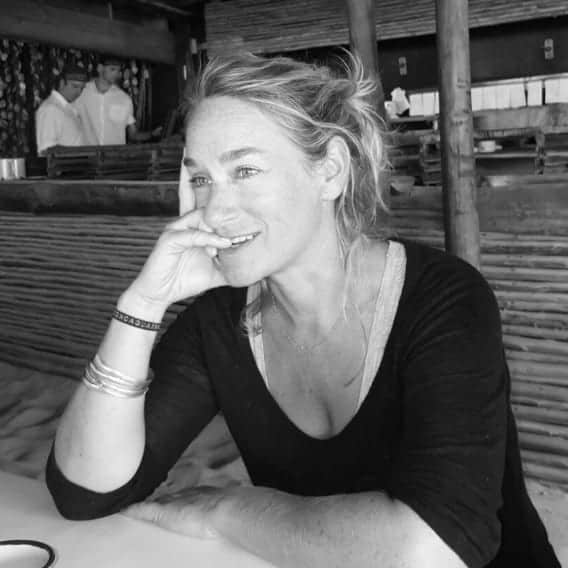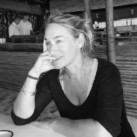
MysticMag offers you an exclusive interview with Cassandra Hamilton, owner of BearDog Dreaming, an artist, writer, and Level 4 teacher of Active Dreaming, a synthesis of modern dreamwork and ancient shamanic techniques. Cassandra learned from core shamanic practitioners as well as shamans influenced by their culture. Her mentor, Albert “Little Turtle” Dugas, days before his death, gifted her his medicine bundle. Using decades of experience, she teaches shamanic techniques, dreamwork, creative practices, visioning, and personal transformation and is part of a worldwide effort to cultivate a dreaming society. Cassandra helps students access deeper wisdom, awaken hidden gifts, and live in alignment with their highest dreams. Her goal is to help every student see themselves as braver and more capable than they currently perceive—and to act using that wider perspective.
Your journey encompasses a rich tapestry of experiences—from studying drama at Carnegie Mellon to engaging in shamanic practices and active dreaming. How have these diverse disciplines influenced your approach to teaching and guiding others in their personal development?
I studied all aspects of theatre production (except sound) as well as acting, directing and playwriting. When I approach dreamwork and shamanic journeying, I, like a theater director, am interested in issues of conflict, harmony, mirrors and foils, and the emotional experience of a story or a fragment. I’m fond of dream theater and like to occasionally aid dreamers in directing their dreams by using other students to play all aspects of the dream, not just the dream characters, but the building, location, costumes, time of day, music, sounds, and objects. I like to encourage students to embody these elements as if all were sentient beings. I encourage the dreamer to interview all that partake in the dream event.
I also love writing and art. So, while encouraging sharing and feedback on dreams/journeys, I help students empower themselves as the expert of their dreams by exploring these experiences through writing, drawing, and creating in their favorite medium. I suggest students take on the role of storyteller, director, and designers of sets, costumes, sound, and lighting. I’m a fan of allowing the shadows, redacted and forgotten elements, objects, buildings and dream characters to all be treated as sentient beings with opinions that need voicing. When students give feedback on another student’s dreams/journeys, they take the perspective that the dream is their own. They never tell another they “should” do anything. The dreamer/journeyer decides what they’ll use and discard. This mirrors how a director relates to their designers and cast. Approaching the experiences in this manner helps one to direct and weave the story of one’s life. Considering this as play, as fun, aids in healing, exploration and braving new ways of seeing and being.
I also graduated from two high schools at the same time. In the morning, I attended my regular high school in an affluent suburb, where I was the poor kid, and in the afternoon, I was an acting student in Hartford’s performing arts high school where the student body covered the gamut of social, economic, racial and cultural groups. The one thing that united us all was love of the arts. We treated everyone as equals and loved creating together. So, I like that my students are from different countries and backgrounds. I like that we have unique stories and, yet, we can also share similar experiences and learn from our differences to improve our lot in life.
Receiving Albert “Little Turtle” Dugas’s medicine bundle is a significant honor. How has this responsibility shaped your work, and in what ways do you incorporate this legacy into your teachings and healing practices?
Al wasn’t my first shamanic teacher, but he was the one with whom I worked most intimately and for the longest period of one-on-one work. Days before his passing, he honored me with the gift of his medicine bundle and instructed me to do as he taught me—but to do so in my own way. This is a huge honor; one I hold dear. I often reflect on whether I’m living up to what he entrusted me with. I hope I am. I want to do him proud.
Here’s a side story of how Al influenced me—one that I carry with me and often share. Al had non-Hodgkin’s lymphoma. Near the end of his life, his cancer returned. Meanwhile, I got the diagnosis of a rare eye disease and was fighting to save my vision. There we were: two artists deeply devoted to shamanic dreaming, both navigating serious health challenges.
Al shared with me that in his final medical appointment, his doctor broke down in tears while telling Al nothing more could be done for him. In that moment, Al chose to become his doctor’s healer. He held his doctor and comforted him. Al later told me, “Sometimes we go to doctors to help us, and sometimes we go to doctors to help them.”
What he said stayed with me and shaped how I relate to my own medical journey. One of my retinal specialists learned from my case and changed the protocol for retinal diseases (like macular degeneration). My neurologist listened to how when I returned to drawing, my pain significantly reduced. He already knew I had found my use of macrobiotics had aided in halting my eye disease and had even experimented with dietary changes himself, and found real benefits. So, when I shared how euphoric I felt after a drawing session—how the pain seemed to vanish—he was intrigued. Especially intrigued that I reported a continued pattern of pain alleviation after drawing. He said he’d bring it up with his colleagues at a conference that included Harvard researchers. Not long after, a study emerged from Harvard showing 45 minutes of drawing significantly reduces cortisol levels. For someone living with chronic pain from conditions like multiple sclerosis (which I have), this finding validates the use of art as medicine.
So, this is just one ripple effect of Al’s influence upon me. People often dismiss shamanic work as woo-woo or esoteric, but in truth, shamanic work and dreamwork can be deeply practical. They aid in perspective—learning to see and experience life from a different perspective from one’s norm. This is core to what I do: I help people shift their perspective, reconnect with their creative power, and reimagine their lives in ways that are not only healing for themselves, but often beneficial for others as well.
And this works—it truly does.
In 2003, you healed a rare eye disease through a combination of macrobiotic diet and shamanic journeying. Could you share more about this experience and how it informs your perspective on the connection between physical health and spiritual practices?
I was diagnosed with a rare eye disease on my 28th birthday—so rare, there were fewer than a hundred case studies in the world. My retina specialist contacted the doctor who wrote the textbook all eye surgeons study and that expert diagnosed my eye disease for which there was (and still has) no known cause or treatment. After two failed eye surgeries destroyed the central vision in my left eye, the disease attacked my right eye and my surgeon told me, “There’s nothing more I can do. Go home and enjoy your last ‘seeing’ holidays.”
However, he didn’t give up. After New Year’s Day, while I still had some sight, he proposed one last effort. “It probably won’t work,” he said, “but I can’t walk away without trying.” We began high-dose steroid treatments. While the damage from the surgeries was irreversible, the steroids managed to pause the progression of the disease.
What followed was a grueling five-and-a-half-year rollercoaster. Each time we attempted to taper the medication, the disease returned with full force. Despite tests by the best eye specialists in the country, doctors had nothing else to offer me. My health deteriorated; I was so weak I couldn’t walk to the bathroom on my own. Two specialists in separate practices told me I had weeks to live.
Then a friend suggested I try macrobiotics. I sought out Michio Kushi and when he heard about my condition, he saw me the very next day. In my consultation, he created a specific healing diet tailored to my needs. I knew nothing of macrobiotics; the dishes, some foods and predation methods were overwhelming to me. Fortunately, my mother had experience with macrobiotic cooking. She prepared the meals Michio had prescribed, and after a weekend of eating that way, I could stand at the stove and cook for myself. The change was so dramatic that I fully committed to continuing his recommendations.
Over the next few months, I lost 100 pounds of weight caused by the steroids. More importantly, my eye disease did not become active as I weaned off steroids. But my doctor remained convinced I’d never be able to come off the medication entirely and recommended another doctor to oversee my taking permanent chemotherapy. I refused, fired the doctor, and found a new specialist who also taught at Yale.
This new retina specialist had one other patient with my disease. With so few cases worldwide, the odds of finding such a physician within driving distance of my home were extraordinary. This doctor was open-minded to let me continue with macrobiotics and warned if things worsened, I’d need to reconsider.
With his support, I continued with macrobiotics. My diet was further refined by one of Michio’s colleagues, and I was eventually able to wean off all medication. But near the end of this tapering off of high dosage steroids, I knew intuitively that unless I discovered why this disease had come to me, it would return.
Around that time, I read a book by Lewis Mehl-Madrona, a Cherokee-Lakota medical doctor and medicine man, and learned he was offering a workshop in Rowe, Massachusetts—only about 90 minutes from my home. My mother and I attended, setting our intention to heal my eyes during the weekend.
At the end of the weekend he asked for a volunteer who could do a shamanic journey and speak during the process. I offered myself. He guided me to meet my disease—to speak to it, to learn why it had come to me, to learn what it had done for me which I thought I could not do for myself, and to learn what I needed to do so that it would not return. I thanked it for what it had done for me, acknowledged that I would now take on that work myself, and sent it away.
After that weekend, I stopped my medication. My eye disease never returned. Many others with the same diagnosis have since lost their vision or gone blind, but I remain symptom-free.
This experience transformed my understanding of the connection between physical health and spiritual practices. My work with Lewis revealed that disease can be a sentient messenger—something we can interact with, question, and learn from. Often, our illnesses perform functions for us that we believe we cannot do for ourselves. Once we recognize this, we can take back that agency.
Illness can also serve as a precise diagnostic tool. Through shamanic journeying and dreamwork, we can gain insight into what is happening within the body and what steps are needed to restore balance. The guidance received is unique, personal, and practical.
So, when someone comes to me struggling with illness, feeling lost or overwhelmed, I honor their story. I invite them to explore their own inner knowing, to consult their own spiritual compass. They can then work with doctors, alternative practitioners, or both—as I have—to carve out a healing path that’s truly their own.
This commitment to empowerment isn’t new for me. Even before my illness, I was passionate about helping others, especially actors, see themselves as more capable, creative, and resilient than they imagined. I designed exercises to help them realize, experience and trust their capabilities.
Today, through my work in shamanic practice and dreamwork, I continue to empower my students with tools to access their inner guidance. They learn how to receive answers through spiritual means—answers that help them live the lives they long for. And when limiting beliefs surface, we work together to shift those ideas, so they can fully embody the powerful, creative beings they truly are.
Your art is described as capturing color, symbols, visions, and compelling compositions. How do your artistic creations intertwine with your shamanic and dreaming practices, and what role does art play in the healing journeys of your students?
I practice a unique method of dreamwork developed by Robert Moss, the founder of Active Dreaming—a synthesis of modern dreamwork and ancient shamanic techniques. One of the central tools he created is the Lightning Dreamwork Protocol, which I use and teach regularly. A key component of this practice, which I follow, is the daily ritual of recording and analyzing one’s dreams upon waking.
In my personal practice, after recording my dreams and doing analysis, I often sketch images from my dreams and shamanic journeys. Sometimes, a visual representation offers insights that words alone cannot capture. Drawing deepens my understanding of the dream because when you create a visual representation, you’re forced to make choices—to “answer” what is happening in the image. During that creating process, new layers of meaning often emerge. This is one of the ways that art and dreamwork intersect in my practice, and I bring this integration into my teachings to help my students engage more deeply with their inner worlds.
Another technique I use is inviting people to “dream into” an image as though it were a room. If someone has created a doodle from their dream or finds an image that stirs something within them, I encourage them to enter into it via a journey or active imagination. By doing so, they can uncover aspects of their experience they may have forgotten or were unclear. They might make a leap of insight.
As for the role of art in students’ healing journeys—yes, it plays a major part. I do encounter individuals who say, “I can’t draw,” or “I’m afraid to draw.” But I’m a passionate advocate for saying “yes” to play. If you can draw a stick figure, you already have everything you need. And even if you’re visually impaired or can only see shadows, if you allow yourself to play without judgment—just step into the creative process—you’ll find answers that were previously hidden. This playful engagement opens new perspectives on the self, which is ultimately what I aim to facilitate: helping people see themselves as empowered and powerful.
As a Level 4 Dream Teacher in Robert Moss’s School of Active Dreaming, you guide students to manifest their best dreams. How do you tailor your workshops to help individuals uncover new aspects of themselves?
I often have a diverse group of dreamers and shamanic journeyers in my classes. I might have experienced Level 4 dreamers sitting beside people who are entirely new to the practice. So, I offer exercises with layered instructions. The base script supports beginners, offering a clear and accessible entry point. For more experienced dreamers, I provide alternate instructions with options to different layers of non-ordinary reality or specific realms of the multiverse, if we’re working within a core shamanic framework.
I also offer a third option, which is more intuitive. When someone dreams with me, I suggest they not focus on the monosyllabic beat of the drum, but instead listen to the space between the beats. When they do, students often begin to hear overtones or even singing from ancestors or other guiding presences that emerge when I drum. This approach opens the space in a different, more expansive way. In all that I teach, I seek for students to experience the lessons so that they come away with a deep knowing.
One of the most important things I do as a teacher is to meet students where they are in the moment. Someone may come with extensive experience but also with a personal issue—perhaps related to health, grief, or a major life transition. In those cases, I set aside the prepared script and attune to what they need that day. That’s where the healing happens—in the immediacy of the moment. I’ll revise or adjust the journey for them, ensuring that it speaks to what is alive in their life right then and there.
Afterward, during the integration phase, some students want to share their experience aloud, while others prefer to write or create before speaking. The questions and insights come at different stages for each person, and I support them in working with what has shown up—because that’s where the transformation lies. Even if other students haven’t experienced that exact issue, the collective space allows everyone to learn. They see reflected aspects of themselves in others’ work, and the shared environment becomes a place of layered learning. Everyone walks away with more than just one lesson—there’s a richness that comes from community exploration.
Another guiding principle I hold closely is the importance of ease and flow. When things unfold smoothly—when synchronicities begin to appear and life feels aligned—I take that as a clear sign that I’m on the right path. Signs and synchronicities are one of the primary ways I navigate my life and I teach my students how to pay attention to these signposts in their waking life as well as in shamanic journeys and dreams.
My dreams are highly prophetic. I often dream about events before they happen, and are a powerful tool for navigating what’s to come in my life. Because I commit time to journaling and reflecting on my dreams, I notice patterns more easily when they begin to manifest in my waking life. It’s as though I’ve already rehearsed the moment—emotionally, mentally, and spiritually—so when it arrives, I can respond with greater clarity and intention. It’s less about reacting and more about participating consciously in what I already sensed unfolding.
I also know that when life aligns in unexpected or serendipitous ways, it’s not mere coincidence. It’s the universe speaking, calling, guiding me to do work that’s uniquely mine to do.
Now, I also know our roles in life change. Just because you’re meant to be somewhere or doing something now doesn’t mean it will be forever. Our only real constant is change. To try to remain the same indefinitely is not only difficult—it’s stifling. So, I try to stay attuned to how the world is shifting around me, and I reflect on how I want to shift in response. I ask myself: with what I know at this moment, how am I being called to act, to serve, to evolve? This is the practice—continually listening, aligning, and moving with life’s currents.
If you would like to find out more about Cassandra Hamilton, please visit https://www.beardogdreaming.com/



